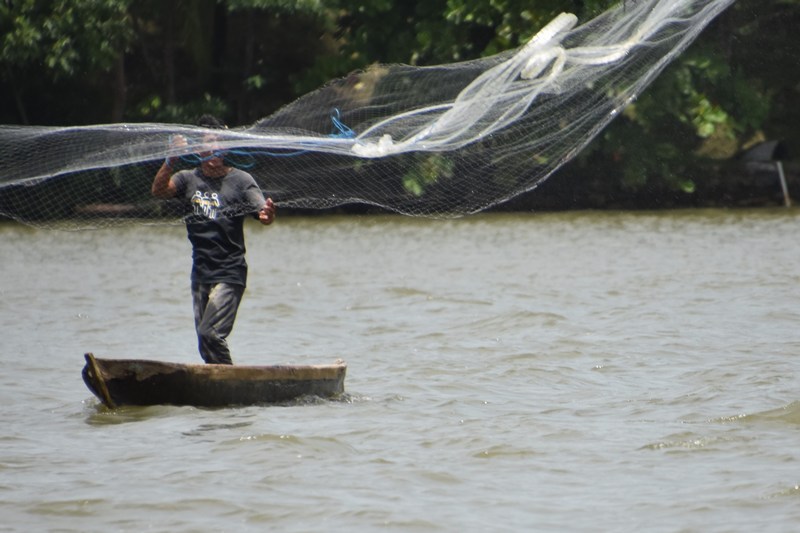15.39.39N 88.59.75' W
The engine has failed, we have no wind
and can barely steer a course as travelling at less than 1knot. We
have over 200 miles to go and as things stand we will miss
Caroline's
Dad's funeral.
Even worse we have an atoll with coral
reefs coming
up with stronger currents around them, which we are worried we
won't
be able to steer a course to miss.
Our satellite phone has stopped
charging, so we feel we have to save this for emergencies. All our
weather forecasts were for stronger winds, but we don't want to
waste
the phone battery checking the weather updates. So, desperate
times
indeed.
Yet again, the engine starting, going and then giving up.
This time, with everything we have sailwise, we went backwards in
the
current towards uncharted coastline.
The satellite phone mysteriously
started charging again, hurray – now we have a weather forecast
and
we have to limp along on the engine for 12 hours, just as we are
approaching another strong current area.
Whilst sailing we hit an
eddy and sailed most of a circle – this journey is definitely a
bit
stressful. Our contingency planning has gone into overload, we may
be
a bit doomed. No wind, the engine went for ½ hour, then for 2
hours
and finally some wind so that we can sail slowly. Our problem now
is
we are arriving at the atoll with very strong lee currents, with a
lee wind and possibly no engine. We have finally arrived at the
potentially worst current area, at night and no idea as to whether
or
not the engine will work for any length of time.
As night
approaches we lose the wind and ability to steer, so we are now
heading towards the atoll at 0.5 knots. Thankfully when the engine
did work earlier we had headed straight off shore to give
ourselves
as much leeway as possible.
Unbelievably the engine starts and
runs at low revs (So we are very slow) for most of the length of
the
atoll. Just as we reach a point we can safely sail at, the engine
starts to fail again and we have to switch it off.
The winds build
and build to 24 knots, we have to keep reefing, we now have
breaking
waves throwing the boat around. From the ridiculous to the
sublime.
Anyway, with crashing waves, lightning all around we sail
fast through the rest of the night.
Now we have the situation
where we can only arrive at Livingston at the wrong time of day
and
so we actually have to reduce sailing speed. We are going to go
slowly through the night to to arrive on a rising tide. This area
is
known for pirates, the moonrise is late on and the lightning
crackles
overhead. The wind is creepy as it makes ghostly sounds in the
rigging and sails. Onwards we sail at 2-3 knots, perfect timing
for
the rising tide and daylight.
Finally, all wind disappears and we
motor slowly across the 0.8 mile sandbank. Fishing boats, nets and
buoys abound, we go over depths of 50m, 20m, 5m and 3 times, 0m,
we
feel a couple of little bumps as fast local motor boats create
enough
wash to reduce the depth.
By 0800 we are anchored awaiting customs
before continuing our 20 mile journey to the marina for our off
season. There is no wind, no accurate charts and we can only
travel
at idle speed so it is going to be a long day. The tender is to be
towed behind us as a spare tow boat just in case the engine does
not
last. Idle speed should extend the time it works. The depths are
up
and down all the way and then we spot withees. Caroline is yelling
Murray, Murray 'withies, bloody withies' again we have hit 0
metres
but not touched bottom. A good look round and we can see that a
river
has dumped a load of silt creating a bank of mud and sand where
one
had not existed, a boat had taken out the first withe so confusing
the course. By the skin of our teeth we avoided going aground as
we
slowly motored into deeper water. Another yacht later in the day
had
to be towed off by a helpful passing local boat.
No wonder we find diving so relaxing,
sailing is not for the faint hearted.
This journey broke one of
our golden rules, never to sail to a time deadline, but we made it
past the second longest barrier reef in the world with 100s of
miles
of poorly charted water, with strong currents, rip tides and
potential for tropical storms and waterspouts.
( A withe is a strong small branch
that
is stuck in water to mark a course and can be very hard to spot)


